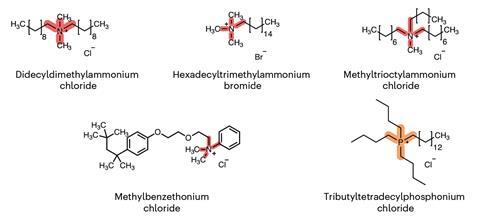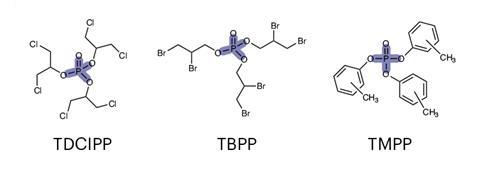Two classes of household chemicals have been found to impair the development of glial cells located in the central nervous system.
The researchers, who are based in the Tesar Lab at Case Western University in Ohio, US, say these effects could have relevance in the context of neurological diseases, such as multiple sclerosis, but that additional studies are needed to evaluate the effects of these compounds in more detail.

The researchers set out to investigate the environmental hazards that might disrupt the development and function of a type of myelinating glial cells called oligodendrocytes. Oligodendrocytes generate myelin to facilitate efficient neuronal transmission and provide support to neurons.
They developed a platform to screen over 1800 chemicals, obtained from the US Environmental Protection Agency, that had been identified as environmental contaminants. These included industrial chemicals, pesticides and chemicals that are of interest to regulatory agencies.
Each chemical was tested individually in cultured cells to assess their effect on different stages of cell development from progenitor cells to mature oligodendrocytes. They then validated the results from the primary screen in vivo using mouse models and in a 3D model of human prenatal brain development.
Through this approach, they identified chemicals from two specific classes that impeded the generation of mouse and human oligodendrocytes: quaternary compounds and organophosphate flame retardants. Quaternary compounds – cations with four substituents – are found in many personal care and disinfectant products, from wipes to alcohol-free mouthwashes, while organophosphate flame retardants are found in furniture, electronics and building materials.
‘[Flame retardants] get applied to these products but they don’t covalently bond to them which means they are constantly shed into the environment and can accumulate in things like dust in your home making exposure extremely likely,’ explains Erin Cohn, a PhD student in the Tesar Lab and first author on the study.
However, the two classes of chemicals were found to have different effects on the oligodendrocytes. The quaternary ammonium compounds were potent cytotoxins during critical periods of oligodendrocyte development, while the flame retardants, specifically TDCIPP, harmed oligodendrocytes development.

These effects could have relevance in the context of neurological diseases, explains Paul Tesar, an expert in neuroscience and genetics at Case Western Reserve University. ‘In multiple sclerosis, where your immune system attacks and destroys these oligodendrocytes, exposure to these compounds could, in theory, provide an exacerbation of that oligodendrocyte loss preventing the cells that you want to regenerate from doing their job,’ he says. ‘Anything that, during early development, might disrupt glial cell dysfunction could lead to neurodevelopmental issues which could either initiate or exacerbate a developmental delay.’
The researchers said their work will form the foundation for them to do more rigorous epidemiological analysis in patient populations.
‘The power of our phenotypic screen allowed us to identify these compounds but now the next step is really to dig deeper and understand mechanistically how they’re interfering with this process,’ says Tesar. ‘The goal is not to raise any alarm bells at this stage [that these chemicals are definitively linked to disease] … we hope that our research contributes to additional studies evaluating the effects of these compounds,’ he adds.
Stuart Harrad, an environmental chemist at the University of Birmingham, explains that TDCIPP is used ‘very widely’ as a flame retardant, particularly in the UK and in Ireland. ‘One of the issues has been that TDCIPP has ended up being used more in car seats because you need a higher level of flame retardant there, it’s also been used in extruded polystyrene building insulation foam, we’ve picked it up in indoor air, drinking water and food. And we also know that if you have direct skin contact with items that contain it, it can be taken up through the skin.’
‘I think this research is very important because it potentially highlights that this exposure, that we all experience … may be causing adverse effects.’
References
EF Cohn et al, Nat. Neurosci., 2024, DOI: 10.1038/s41593-024-01599-2

















No comments yet